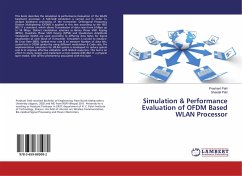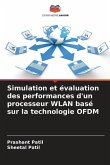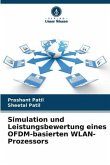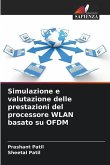This book describes the simulation & performance Evaluation of the WLAN baseband processor. A MATLAB simulation is carried out in order to analyze baseband processing of the transceiver. Orthogonal Frequency Division Multiplexing (OFDM) is applied in this text according to the IEEE 802.11 a standard, which allows Transmission of data rates from 6 Mbps up to 54 Mbps. Distinct modulation schemes as Binary Phase Shift Keying (BPSK), Quadrate Phase Shift Keying (QPSK) and Quadrature Amplitude modulation (QAM) are used according to differing data Rates for Signal visualization at each block of Transceiver. Simulation is carried to measure Bit Error Rate (BER), Symbol error rate & to measure Number of data bits, coded bits in OFDM symbol by using different modulation & Code rate. Pre implementation simulation for WLAN system is developed to reduce system cost & to improve effective utilization with limited resources. This text is an effort to study, design and implement a near-realistic IEEE 802.11 a physical layer model, with all the phenomena associated with this layer.
Bitte wählen Sie Ihr Anliegen aus.
Rechnungen
Retourenschein anfordern
Bestellstatus
Storno








